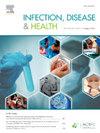Changes in isolation guidelines for CPE patients results in only mild reduction in required hospital beds
IF 2
Q2 PUBLIC, ENVIRONMENTAL & OCCUPATIONAL HEALTH
引用次数: 0
Abstract
Background
Carbapenemase-producing Enterobacterales (CPE) are an emerging public health concern globally as they are resistant to a broad spectrum of antibiotics. Colonisation with CPE typically requires patients to be managed under ‘contact precautions’, which creates additional physical bed demands in healthcare facilities.
Methods
This study examined the potential impact of revised isolation guidelines introduced in late 2023 in Victoria, Australia, that relaxed the requirement for indefinite isolation of CPE-colonised patients in contact precautions, based on admission of CPE-diagnosed cases prior to the guideline change.
Results & conclusions
Our analysis showed that while the changes result in modest savings in the need for dedicated isolation rooms, they could reduce the duration of time individual patients spend in isolation by up to three weeks. However, ongoing investments to expand isolation capacity would still be required to accommodate the rising incidence of CPE.
对 CPE 患者隔离指南的修改仅导致所需病床的轻微减少。
背景:产碳青霉烯酶肠杆菌(CPE)对多种抗生素具有耐药性,是全球新出现的公共卫生问题。定植 CPE 的患者通常需要采取 "接触预防措施",这给医疗机构带来了额外的病床需求:澳大利亚维多利亚州于 2023 年底修订了隔离指南,放宽了在接触预防措施中无限期隔离 CPE 感染患者的要求,本研究根据指南修订前 CPE 诊断病例的入院情况,研究了修订后的隔离指南可能产生的影响:我们的分析表明,虽然这些变化导致对专用隔离室的需求略有减少,但却能将单个患者的隔离时间最多缩短三周。不过,仍需要持续投资以扩大隔离能力,以应对 CPE 发病率的上升。
本文章由计算机程序翻译,如有差异,请以英文原文为准。
求助全文
约1分钟内获得全文
求助全文
来源期刊

Infection Disease & Health
PUBLIC, ENVIRONMENTAL & OCCUPATIONAL HEALTH-
CiteScore
5.70
自引率
5.70%
发文量
40
审稿时长
20 days
期刊介绍:
The journal aims to be a platform for the publication and dissemination of knowledge in the area of infection and disease causing infection in humans. The journal is quarterly and publishes research, reviews, concise communications, commentary and other articles concerned with infection and disease affecting the health of an individual, organisation or population. The original and important articles in the journal investigate, report or discuss infection prevention and control; clinical, social, epidemiological or public health aspects of infectious disease; policy and planning for the control of infections; zoonoses; and vaccination related to disease in human health. Infection, Disease & Health provides a platform for the publication and dissemination of original knowledge at the nexus of the areas infection, Disease and health in a One Health context. One Health recognizes that the health of people is connected to the health of animals and the environment. One Health encourages and advances the collaborative efforts of multiple disciplines-working locally, nationally, and globally-to achieve the best health for people, animals, and our environment. This approach is fundamental because 6 out of every 10 infectious diseases in humans are zoonotic, or spread from animals. We would be expected to report or discuss infection prevention and control; clinical, social, epidemiological or public health aspects of infectious disease; policy and planning for the control of infections; zoonosis; and vaccination related to disease in human health. The Journal seeks to bring together knowledge from all specialties involved in infection research and clinical practice, and present the best work in this ever-changing field. The audience of the journal includes researchers, clinicians, health workers and public policy professionals concerned with infection, disease and health.
 求助内容:
求助内容: 应助结果提醒方式:
应助结果提醒方式:


